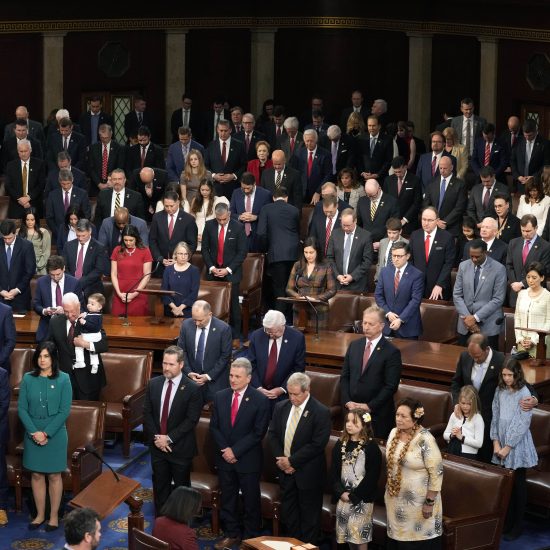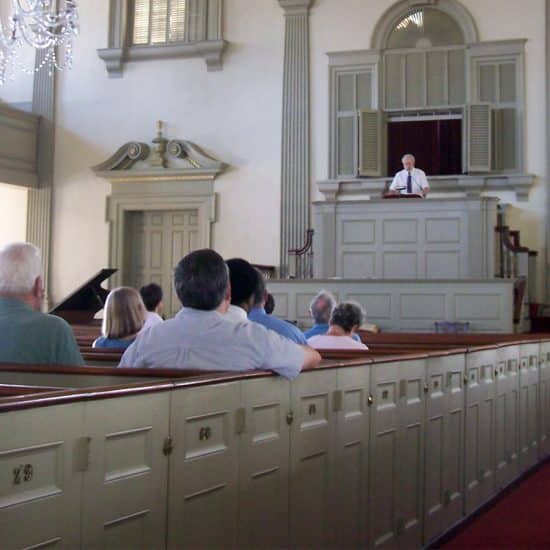WASHINGTON (RNS)—After a decade-long clergy shortage in America’s pulpits, Christian denominations are now experiencing a clergy glut—with some denominations reporting two ministers for every vacant pulpit.
“We have a serious surplus of ministers and candidates seeking calls,” said Marcia Myers, director of the vocation office for the Presbyterian Church (USA), which has four ministers for every opening.
The cause of the sudden turnaround? Blame the bad economy.
According to Presbyterian Church data, there are 532 vacancies for 2,271 ministers seeking positions. The Assemblies of God, United Methodist Church, Church of the Nazarene and other Protestant denominations also report significant surpluses.
Cash-strapped parishioners—who already were aging and shrinking in number—have given less to their churches, resulting in staff cuts.
Meanwhile, older clergy who saw their retirement funds evaporate are delaying retirement, leaving fewer positions available to younger ministers.
“With the employment prospects both in and out of the church being slim, those who are employed are not likely to leave”—at least not voluntarily, Myers said.
All that adds up to a clergy glut—a dramatic shift for denominations and seminaries that had once recruited young ministers to combat the “clergy shortage.” Now seminary graduates struggle to find ministerial employment.
“There is just no place to go,” said Patricia M.Y. Chang, an associate professor of sociology at Stanford University who has studied clergy supply and demand for more than a decade.
In the 1950s, there were roughly the same number of ministers as churches in the United States. Now there are almost two ministers for every church, according to the latest Yearbook of American and Canadian Churches—607,944 ministers and 338,713 congregations.
Not all those ministers are looking for employment; some are not working or are employed in other professions. Those who are looking—especially recent seminary graduates—say realistic offers are few.
Larger churches are eliminating vacant positions or terminating associate pastors, Myers said. Smaller congregations are shifting some ministers from full time to part time.
That’s what happened to Stephen Farrar, 38, whose full-time music minister position was cut to part time, mostly because of finances. He resigned to look for another position, but has only found a part-time interim music job at Calvary Baptist Church in Mt. Airy, N.C.
“Things are kind of hard around here, and when there are openings, it’s very, very competitive,” he said.
Most churches, he said, are looking for a jack-of-all-trades—music, administration, preaching, youth and children’s work—things for which Farrar wasn’t trained.
“It’s been tough sometimes, but there’s no doubt in my mind that God called me into this,” he said.
Job hunting is toughest in churches that are autonomous and not connected to a denominational hierarchy. While United Methodists guarantee placement to every fully credentialed minister, Baptist pastors, for instance, are mostly on their own.
“It’s a free market,” said Ed Stetzer, a Southern Baptist researcher.
It’s virtually impossible to track supply and demand among non-hierarchical churches, such as Baptists, Pentecostals and many evangelical groups. But researchers agree the clergy glut is even worse in loose-knit denominations that offer little job security.
In the Church of the Nazarene, 6 percent of U.S. congregations currently are without a pastor, said Nazarene researcher Rich Houseal. That’s down from the typical 8 to 10 percent, he said, and is likely a reflection of the recession. The vacancy rate is higher, however, among ethnic churches and small congregations.
Small congregations—those with 100 members or fewer—make up the majority of Protestant churches in the United States, and in those pulpits, there’s still a shortage of ministers. A 2008 study in the Presbyterian Church found 71 percent of churches with fewer than 100 members had no permanent pastors.
The two-pronged reality facing American congregations actually is a glut and a shortage at the same time, researchers said.
“You have a shortage in small churches, but you have a glut in larger churches,” said Chang.
In fact, there are indications that both the shortage and the glut are caused by the same factor—the difficulty of staffing small, struggling congregations.
“Everyone talked about a clergy shortage, but there never really was one,” said Chang. There has long been a surplus of ministers, she said. They’re simply not serving where they’re needed—in small churches.
Whether there is a shortage or a surplus depends to a degree on perspective. If you’re a denominational official responsible for filling empty pulpits, it can be difficult to find willing clergy. But if you’re an unemployed minister looking for a church position with a livable wage, the prospects are bleak.
A recent Presbyterian Church study found only 9.5 percent of seminary grads are open to serving in a congregation with fewer than 100 members; only 7 percent are willing to serve in a rural setting.
“Many people who graduate from seminary think they’re going to get a large church like the one they are from, but there just aren’t that many large churches,” Chang said.
It’s not simply snobbery but financial reality. A survey by the Association of Theological Schools found 25 percent of 2009 graduates incurred more than $30,000 in seminary debt —often on top of undergraduate loans.
And ministers of all ages, especially in low-paying situations, usually depend on a spouse’s income to make ends meet.
“We find more geographically bound ministers—those with spouses settled in careers or other family ties to a region—who actually stay longer in congregations than they might have decades ago, when spouses were not typically employed,” said Myers.
Even if the clergy glut is real, most observers expect it to dissipate once the economy picks up. It could also be forced by another factor: baby boomer pastors will start retiring in large numbers. The first wave of boomers, born in 1946, turn 65 in 2011.
An official of the Evangelical Lutheran Church in America estimated recently that when economic pressures recede, the “pent-up demand” could triple the number of retirements in the denomination—from about 300 to 1,000 a year.
Likewise, one seminary leader said the clergy glut is more of “a traffic jam at rush hour.” When the economy starts flowing again—as churches hire and boomers retire—the resumes of clergy candidates will start to flow as well.
“In five to seven years, I think we are going to see a major turnover and experience a shortage again,” said Dock Hollingsworth, assistant dean of Mercer University’s McAfee School of Theology in Atlanta.
“We laugh around here that every pastor we know is 57 years old,” he said. “The baby-boomer pastors are all going to retire the same weekend!”




